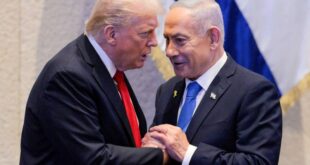This November, Iraqis will once again head to the polls for parliamentary elections. Yet the outcome will be shaped less by formal parties than by the entrenched networks of militias that dominate Iraq’s political and security landscape. Since the last elections in October 2021—and the subsequent mass protests and storming of parliament in August 2022—the influence of militias has not diminished but rather consolidated. To some observers, these developments confirm that the state has lost its authority or that militias enjoy widespread popular support.
But the reality is more complex. People do not simply “support” militias or “resist” them. Their relationship to armed groups lies on a spectrum of obedience: sometimes voluntary, sometimes conditional, and sometimes purely coercive. This spectrum matters. It explains why the Popular Mobilization Forces (PMF)—a constellation of armed groups formed in 2014 to fight the Islamic State of Iraq and Syria (ISIS)—endured for more than a decade. It also shows why efforts to “dissolve” militias or replace them with state institutions have repeatedly failed. Obedience is not uniform. It is situational, relational, and shaped by local contexts.
From Support or Opposition to a Spectrum of Compliance
Discussions about militias in Iraq often fall into a false binary: people either support them or oppose them. In practice, daily life under armed actors is far more complicated. Many Iraqis comply with militias without believing in their authority—simply because it is safer, more rewarding, or unavoidable.
Political scientists distinguish between legitimacy—genuine belief in authority—and compliance—outward obedience regardless of inner conviction. In Iraq, compliance with militias falls along three overlapping modes:
Voluntary compliance is when communities place faith in a group or benefit from its services.
Conditional compliance, sometimes described in the literature as quasi-voluntary compliance, is when obedience combines benefits with subtle threats.
Coercive compliance is when obedience is extracted through violence, exclusion, or structural dependence.
The PMF encompasses all three forms. Their factions rely on different mixes of identity, service provision, and coercion—and they shift strategies depending on the context. This adaptability is one reason militias have proven so resilient, outlasting repeated attempts by the Iraqi state and its international partners to disband or marginalize them.
Voluntary Compliance: Faith and Services
Some PMF factions have cultivated relatively high levels of voluntary compliance. The shrine militias, loyal to Grand Ayatollah Ali al-Sistani, for example, consistently enjoyed respect among both Shia and Sunni populations. They avoided entanglement in predatory politics, distanced themselves from the PMFwhen violence escalated, and emphasized religious legitimacy and public service. Their restraint gave them credibility as partners of the state and as reliable protectors of communities.
A similar story unfolded in the Nineveh Plains, where the Christian Nineveh Plains Protection Units secured loyalty by defending towns such as Qaraqosh and Bartella during and after the anti-ISIS campaign. Even though their current role remains uncertain, at the time they became trusted local guardians despite lacking full state backing.
These cases illustrate that militias can command obedience not only through force but also by providing tangible protection and aligning themselves with widely respected religious or cultural authorities. This form of compliance resembles legitimacy in the classical sense—but it is only one part of the spectrum.
Conditional Compliance: Between Benefits and Threats
Other militias generate obedience through a mix of incentives and implicit coercion. Saraya al-Salam, the armed wing of the Sadrist movement led by Shia cleric and populist leader Muqtada al-Sadr, illustrates this middle ground. The broader Sadrist current presents itself as a voice of the poor, providing charity and denouncing corrupt elites. Many Shia support them voluntarily for their populist stance and visible welfare activities.
Yet this support is uneven. In places such as Samarra, Sunnis often remain marginalized under Sadrist control. While some elites benefit from stability and economic opportunities, many ordinary residents experience exclusion and subtle pressure. Obedience here is conditional: people comply partly because of benefits and partly out of fear of what might happen if they do not.
A similar dynamic is visible among Yezidi militias in Sinjar. Groups such as the Sinjar Resistance Unitsinitially gained broad support for driving out ISIS and defending local communities at a time when trust in both Kurdish and Iraqi forces had collapsed. But support has remained transactional: Yezidis value them as a counterweight to Kurdish dominance while criticizing their involvement in smuggling and their ties to pro-Iranian groups. Compliance in Sinjar reflects pragmatism rather than loyalty—cooperation continues because these militias provide immediate protection, yet trust is fragile and easily eroded.
Conditional compliance thrives on ambiguity. Citizens and fighters alike navigate between opportunity and constraint—supporting militias for what they provide, but never without an undercurrent of pressure.
Coercive Compliance: Rule by Fear and Patronage
At the other end of the spectrum lies coercive compliance, where obedience is sustained primarily through intimidation, violence, and dependency.
Iranian-backed Kata’ib Hezbollah illustrates coercive compliance on a large scale. After retaking the town of Jurf al-Nasr from ISIS in 2014, the group imposed a “no-go zone.” Nearly 100,000 displaced Sunni residents have since been prevented from returning. Reports describe the area as a militarized enclave with missile workshops, clandestine detention centers, and mass graves. Authority here rests not on legitimacy, but on fear, exclusion, and violence.
The Shabak militias in Nineveh provide another case. Reports by the United States Treasury document systematic abuses, including extortion, kidnappings, and illegal detentions in Bartella, a historically Christian town. While the Shabak community benefits from militia dominance, Christians and other minorities comply largely out of fear and lack of alternatives.
These patterns underscore the limits of state integration. Even when militias are formally recognized as part of the security apparatus, their local power often rests on coercion. And yet, compliance still occurs: people obey, even if unwillingly.
Implications: Compliance as a Survival Strategy
What Iraq shows is that compliance with militias cannot be reduced to “support” or “opposition.” Instead, it must be seen as a spectrum of survival strategies. Communities accept militia authority because of faith, services, selective benefits, or sheer fear.
For policymakers, two lessons follow. First, dissolving militias is far harder than it looks. As long as they provide security, salaries, or services, people will continue to engage with them—voluntarily or otherwise. Second, focusing solely on coercion risks overlooking the more subtle forms of authority. Conditional compliance, in particular, reveals how militias entrench themselves by blurring the line between protection and threat.
These dynamics are not unique to Iraq. Hezbollah in Lebanon provides a striking parallel: it combines religious legitimacy and service provision with the implicit capacity for violence, embedding itself as both a political actor and an armed force. The PMF thus illustrates a broader lesson: in fragmented states, authority is never binary. It is constantly negotiated in the space between faith, benefits, and fear.
Conclusion
Every system of rule, Max Weber once observed, seeks to awaken belief in its legitimacy. Iraq’s PMF shows how fragile and contested such belief can be. Their authority rests not only on guns but also on salaries, services, religious ties, and intimidation. Recognizing this spectrum of compliance does not excuse militia violence. But it helps explain why armed groups endure and why simplistic calls for their dismantling ring hollow.
To understand why people live under militias, we must move beyond the illusion of loyalty—and see compliance for what it is: a pragmatic response to survival in fragmented political orders.
 Geostrategic Media Political Commentary, Analysis, Security, Defense
Geostrategic Media Political Commentary, Analysis, Security, Defense





